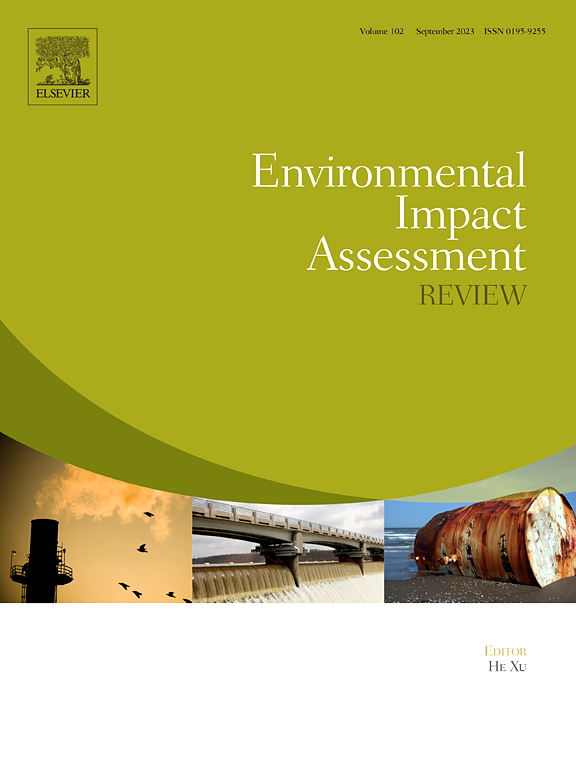Assessing human health risks associated with wastewater flooding
IF 9.8
1区 社会学
Q1 ENVIRONMENTAL STUDIES
引用次数: 0
Abstract
Exposure to wastewater, resulting from flooding of sanitary sewer systems during extreme weather events, presents a critical public health challenge, exacerbated by climate change and population growth. Wastewater contains a mixture of biological and chemical contaminants, posing significant health risk to communities, and leading to lingering risks of mould growth in flooded buildings. The health risks associated with exposure to contaminated wastewater during flooding events are particularly acute for vulnerable populations, including children (<5 years), the elderly (>65 years), and individuals with chronic obstructive pulmonary disease (COPD), asthma, mobility and visual impairments, mental health disorders, and high blood pressure. In this study, scenario-based wastewater modeling is used to estimate the population of vulnerable individuals and buildings at-risk during flood events, focusing on Charlottetown, Prince Edward Island as a case study. The modeling estimates that by 2023, approximately 3225 individuals and 6.4 % of total buildings are at risk from wastewater flooding under a 2-year scenario, increasing to 9479 individuals and 11.6 % of buildings by 2060. For a 100-year scenario, the risk rises from 8170 individuals and 17 % of buildings in 2023 to over 16,708 individuals and 21.5 % of buildings by 2060. The study also proposes detailed exposure pathways and introduces a collaborative planning framework to support adaptive wastewater management. The results highlight increasing vulnerabilities, with severe consequences such as exposure to aerosolized pathogens, heavy metals, and mould growth. By addressing health risks and advocating for socially equitable flood risk mitigation, the study offers actionable insights to support sustainable and resilient communities. This study aligns with the goals of good health and wellbeing (SDG3), and clean water and sanitation (SDG6), both of which are essential for achieving sustainable cities and communities (SDG11).

评估与废水泛滥有关的人类健康风险
在极端天气事件期间,卫生下水道系统淹水导致污水暴露,这是一项重大的公共卫生挑战,气候变化和人口增长加剧了这一挑战。废水中含有生物和化学污染物的混合物,对社区构成重大健康风险,并导致被淹建筑物中霉菌生长的风险挥之不去。在洪水事件期间,与接触受污染废水有关的健康风险对弱势群体尤其严重,包括儿童(5岁)、老年人(65岁)以及患有慢性阻塞性肺病(COPD)、哮喘、行动能力和视力障碍、精神健康障碍和高血压的个体。本研究以爱德华王子岛夏洛特镇为例,采用基于场景的污水建模方法估算洪水事件中易受影响的个人和建筑物的数量。该模型估计,到2023年,在2年的情景中,大约有3225个人和6.4%的建筑物面临废水泛滥的风险,到2060年,这一数字将增加到9479个人和11.6%的建筑物。以100年为例,到2060年,风险将从2023年的8170个人和17%的建筑物上升到16708个人和21.5%的建筑物。该研究还提出了详细的暴露途径,并引入了一个协作规划框架,以支持适应性废水管理。研究结果强调了日益增加的脆弱性,其严重后果包括暴露于雾化病原体、重金属和霉菌生长。通过解决健康风险和倡导社会公平的洪水风险缓解,该研究为支持可持续和有复原力的社区提供了可行的见解。这项研究符合良好健康和福祉(可持续发展目标g3)以及清洁水和卫生设施(可持续发展目标6)的目标,这两个目标对于实现可持续城市和社区(可持续发展目标11)至关重要。
本文章由计算机程序翻译,如有差异,请以英文原文为准。
求助全文
约1分钟内获得全文
求助全文
来源期刊

Environmental Impact Assessment Review
ENVIRONMENTAL STUDIES-
CiteScore
12.60
自引率
10.10%
发文量
200
审稿时长
33 days
期刊介绍:
Environmental Impact Assessment Review is an interdisciplinary journal that serves a global audience of practitioners, policymakers, and academics involved in assessing the environmental impact of policies, projects, processes, and products. The journal focuses on innovative theory and practice in environmental impact assessment (EIA). Papers are expected to present innovative ideas, be topical, and coherent. The journal emphasizes concepts, methods, techniques, approaches, and systems related to EIA theory and practice.
 求助内容:
求助内容: 应助结果提醒方式:
应助结果提醒方式:


